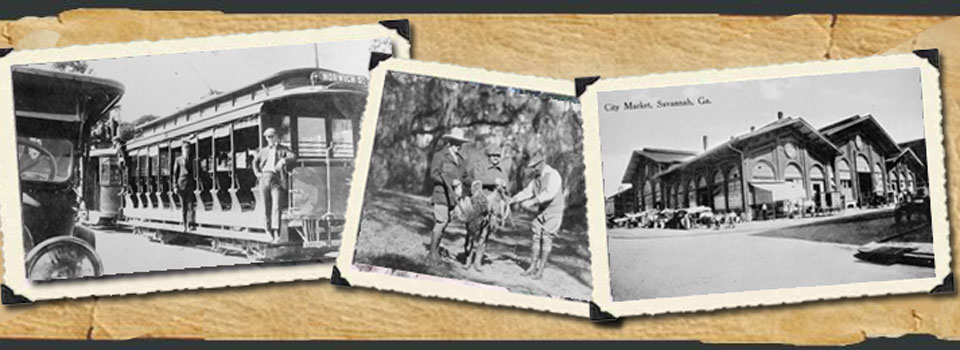Constructed in 1872, the old City Market building survived for more than 200 years before succumbing to the wrecking ball in 1954. The people of Savannah said goodbye to the building in grand style, throwing a party called the Market Ball. Photographs of the City Market taken in 1900 and 1914, along with thousands of other items on the history of Georgia’s coastal counties may be found in the Digital Library of Georgia (DLG), housed at the University of Georgia.
“Understanding Georgia’s rich cultural heritage requires something that even the best text books cannot convey,” said Toby Graham DLG director. “It requires access to the original record of the past: the photographs, letters, memoirs, historical books and newspapers, government documents, and other sources that depict firsthand the lives and events that shaped the culture of the state that we know today.”
The DLG shares via the Internet a half million images and pages of text drawn from 40 different libraries, archives and museums, as well as 80 agencies of state government.
With a single search, visitors can locate items from across 60 different collections, including the popular New Georgia Encyclopedia, Georgia Government Publications database and Vanishing Georgia photographs. The site provides advanced searching, including the ability to limit by collection, institution, date or type of material.
In addition to the 1,300 historical images from the Vanishing Georgia collection, people interested in coastal Georgia will find the Annual Reports of the Mayor of Savannah, 1855-1917, aerial photographs, the “Living in Savannah, 1940-1941” photographs from Armstrong Atlantic State University, Cyrus F. Jenkins Civil War diary, and issues of Savannah’s African-American Tribune newspaper from 1876.
New features of the DLG include the ability to find resources from more than 60 databases and web sites with a single search. The site also has improved browsing features. By clicking on an online map, users can locate historical images, aerial photography, encyclopedia articles and other resources on each of Georgia’s 159 counties. A clickable timeline allows browsing by historical periods. Visitors may select collections based on material types – such as letters or diaries — or they may view all of the collections from a particular library, archive or museum. The DLG site also categorizes its collections by topics, such as “The Arts,” “Government and Politics” and “Peoples and Cultures.”
The Digital Library of Georgia is based at the UGA Libraries. GALILEO is administered by the Board of Regents, University System of Georgia. GALILEO has more than 2,000 member institutions across Georgia, including k-12 schools, colleges and universities and public libraries.


